如何使用CCST结构有效执行关卡设计
作者:Patrick Holleman
几年前我写了一本分析《超级马里奥世界》(1990年)中每一个关卡的书,在书里我更是明确描述了游戏中大多数关卡的系统创造方法。《超级马里奥世界》是一款经典且值得学习的游戏,并且它所传达的经验教训也适用于电子游戏设计。就像“超级马里奥世界方法”或“任天堂方法”等关卡设计便出现在各种类型的游戏中,甚至还出现于那些不是任天堂所创造的游戏里。
在本篇教程中,我们将着眼于20世纪90年代在关卡设计中所发展起来的自然组织形式。因为电子游戏设计师(特别是任天堂的设计师)的技艺越来越纯熟,所以他们也开始凭借直觉去组织自己的内容。在这里我将向你解释如何在自己的游戏中使用所有的这些直觉性技巧。
挑战,节奏,技能主题
关于我们所面对的框架的真正名字是“挑战,节奏,技能主题”或者简称为CCST。我将使用来自《马里奥制造》的例子去解释CCST结构的基本部分。不过我发现像《洛克人》,《银河战士》,《传送门》,《半条命》,《超级食肉男孩》等等游戏也使用了CCST结构。其实你也能从一些你所喜欢的游戏中看到这些内容,所以你可以将一些更出色的组织和深度带到你的游戏内容中。
挑战
第一步是理解并明确挑战。挑战是一个较简短的任务,即被一些相对安全的时期所环绕着,在这里玩家必须同时完成所有内容。让我们着眼于下述例子,即马里奥必须跳上并跳下一个无底洞上的移动平台。
在移动平台的另一面上,玩家能够无需遭遇任何危险地等待。一旦出现在平台上,玩家便需要保持谨慎以避免掉进无底深渊中丢了性命。因此挑战的开始与结束都是基于移动平台左右两边的安全区域。
让我们看看一些更复杂的内容。在下一个挑战中我添加了另一个完全不同的移动平台。对于这一挑战,范围仍然是平台的每一面,但这时候玩家必须跳过两种平台才能安全地完成这一任务。
尽管这一挑战更大型,但它也仍然只是一个挑战,因为玩家需要在行动中穿越两个移动平台,并最终到达右边的安全挑战范围。
挑战可以非常巨大,但你也必须记得它们是由一些玩家在面对下次挑战前能够“休息”的安全时期所环绕着。挑战以及它们的界限在不同的游戏中也是不同的。例如《刺猬索尼克》中的一些挑战便比《马里奥》中的挑战范围更大,因为索尼克的移动速度更快且玩家需要额外的空间去放慢速度,停下来或改变方向。但不管怎样它们所坚守的原则都是一样的。
用挑战填满关卡
只是了解挑战是什么还不够;一名优秀的设计师同时也需要了解如何使用它们去填满一个关卡。关卡需要不断变难,否则玩家很快便会厌倦它。但同时设计师也不能只是将任意挑战添加到关卡中;基于不同挑战的关卡还必须具有一致性。我们也是在此进入不同类型的挑战中并认识到它们彼此间的关系。
发展
让我们着眼于我所呈现的两个挑战间的关系:
第一个挑战和第二个挑战有什么不同?它们都是基于移动的平台,但是第二个挑战添加了一些新内容:这里有两种不同的平台在不同时间段会以不同形状移动着。所有的难度都是源自类型间的转变。
当两个挑战间的区别是关于定性元素的增加时,那么后面的挑战便是之前挑战的发展。从质量上来看第二个挑战是对于第一个挑战更复杂的迭代。
以下是另一个关于发展的例子:
你可以发现我所做的只是添加一个在平台间上下移动的敌人。这是关于复杂性的另一个定性增加,即让玩家更难找到适当的跳跃机会。
在复杂性方面这并不是一次较大的跳跃;有时候任天堂游戏会在小小的一步上创造出更难的变化。在关卡的最后,逐步堆积的发展将创造出最难的挑战,而这一过程也是一个完整的发展过程。
扩展
还有另一种既能提高挑战难度也能保留关卡最初设计理念的方法。在下图的挑战中我重新迭代了第一个挑战,并且对它做出了一个较大的改变。
我延长了静止平台和移动平台间的距离,因为马里奥需要跳跃更长的距离,所以跳跃难度便加深了。这也是我所谓的扩展挑战。
扩展是指在之前挑战的基础上增加一些可衡量的定性元素。在这个例子中便是平台间的空间增加了三倍。让我们着眼于另一个扩展例子:
这一挑战就像是之前挑战的第二个发展阶段,除了我需要双倍增加两个平台间的敌人数量外。玩家的跳跃变得更加复杂,因为最有效的跳跃空间变得更小了,但这一切都是因为一个简单的量变。
扩展挑战是很容易执行的,因为所有的设计师只需要添加更多已经存在的内容便可。所以一些没有经验的设计师总是很难把握扩展挑战的度。
发展,扩展和重置
在你开始尝试关卡的发展与扩展前,你还需要了解一些指南。
首先,《马里奥》的关卡(及其后续内容)并不是以线性方式发展的。相反地,这里的关卡经常被“重置”回最开始,然后再以不同的方向发展。
以下是我的关卡中的一个例子:
比起坚持循环平台并创造出更复杂的内容,我们的关卡采取的是不同的方式。在这里,基本的循环平台将发展成一个线性的移动平台。比起跳到一个全新平台,马里奥将通过跳跃去避开敌人。
其实技能都是一样的(游戏邦注:即在适当的时间跳跃),但对于关卡还是存在一个全新的定性方向。对于下一对的挑战,我们将使用这一全新方向作为挑战基础。
下一个挑战是伴随着线性行动理念:
你并不需要近距离观察这一挑战便能看到它在之前挑战的基础上做出了定性和数量的改变。追踪路径的向下调整便是一种定性改变,而跳跃部分中额外敌人的添加则是数量的改变。这不仅是一种发展,也是一种扩展。
在《超级马里奥世界》中,发展并扩展之前内容的挑战其实与只做了其中一件事的挑战一样。
最终,我的关卡是止于这一挑战,即将重新呈现了较早前的循环平台:
这是一种教常见的策略,在这里两个发展关卡分支将被整合在一起。我们将在最终调整中同时看到循环平台和线性追踪平台。
节奏
这时候我想重新回到有关节奏的定义上。节奏是维系关卡中所有挑战关系的一种方法。
为了更好地描述这方面,我创造了一张能够解释我的关卡如何运行的地图图像:
就像你所看到的,这一关卡被分成两个发展分支,或者用我的话来说是带有一个最终连接行动的“分叉”节奏。
甚至在任天堂游戏中以及在《超级马里奥世界》中也存在各种各样的节奏:
比起其他开发者所创造的游戏,这里拥有更多节奏风格。这意味着节奏结构并不会限制作为关卡设计师的你的创造性,甚至它还能强化你的创造性。
CCST框架只是帮助设计师保持创造性的有序和统一的一种工具。发展和扩展可以用于任何游戏或任何机制中。而节奏则是帮助你理解关卡设计中自然出现的模式的一种有效方法。
结论
尽管我将上述概念称作自己的部分研究,但我在本文中所讨论到的所有内容都是会自然地出现在经典电子游戏设计过程中的内容。实践总是比理论更重要,对于关卡设计也并不存在最完美的诀窍。但是CCST结构还是能够帮助你更好地完善并创造自己的作品。
(本文为游戏邦/gamerboom.com编译,拒绝任何不保留版权的转发,如需转载请联系:游戏邦)
How to Design Levels With the “Super Mario World Method”
by Patrick Holleman
A couple of years ago, I wrote a book analyzing every level in Super Mario World (1990), where I identified the systematic way in which most of the game’s levels were created. Super Mario World is a classic and worth studying in its own right, but the lessons it teaches are broadly applicable to video game design. The “Super Mario World method”, or “Nintendo method” of level design actually appears in all manner of games—even games that were not made by Nintendo.
In this tutorial, we’ll look at a natural form of organization that evolved in level designs from the 1990s and beyond. As video game designers (especially Nintendo designers) got more and more practiced at their craft, they began to organize their content intuitively. Here, I’ll explain how you can use all of these intuitive tricks deliberately in your own games.
My Example
I’ve created (and annotated) a Super Mario Maker level using this method; you can see it here:
Challenge, Cadence, Skill-Theme
The actual name for the framework we’re looking at is “challenge, cadence, skill-theme” or CCST for short. I’m going to use examples from Super Mario Maker to explain the fundamental parts of the CCST structure because it’s a very convenient example. However, I have seen use of the CCST structure in Mega Man, Metroid, Portal, Half-Life, Super Meat Boy, and many other games. With practice, you will be able to identify these things in some of your favorite games, so that you can bring a greater level of organization and depth to your game’s content.
Challenges
The first step lies in understanding and identifying challenges. A challenge is a short task, surrounded by periods of relative safety, which the player must complete all at once. Take a look at the example below, where Mario must jump on and off a moving platform above a bottomless pit.
On either side of the moving platform, the player can basically wait around without being in any danger. Once on the platform, however, the player has to be careful not to fall into the bottomless pit and lose a life. Thus, the challenge begins and ends on the safe, stationary ground to the left and right of the moving platform.
Let’s take a look at something more complex. In this next challenge I have added a second moving platform of a different type. For this challenge, the boundaries are still the solid ground on either side, but now the player has to jump across two kinds of platforms in order to make it safely through.
Even though this challenge is larger, it’s still one challenge, because the player has to get through the two moving platforms in one action, before arriving at the safe challenge boundary on the right.
Challenges can be quite large, but you must always remember that they are bounded by periods of safety where the player can (in a sense) “rest” for a moment before beginning the next challenge. Challenges and their boundaries are different in different kinds of games. For example, some challenges in a Sonic the Hedgehog game are much wider than those in a Mario game, because Sonic is usually moving much faster and the player needs the extra space to slow down, stop, or change direction. The principle is still the same, however.
Filling a Level With Challenges
It’s not enough to know what challenges are; a good designer also has to know how to fill a level with them. The level has to get more difficult, or else it will be boring. But at the same time, the designer can’t simply throw random challenges into the level; the level needs to feel coherent from challenge to challenge. This is where we get into the different types of challenges, and their relation to one another.
Evolutions
Let’s take a look at how the two challenges I have shown you are related to one another:
What is different between the first challenge and the second challenge? They’re both based on moving platforms, but the second challenge has added something new: there are two different kinds of platform moving in different shapes at different intervals. All of the complexity comes from changes in type or kind.
When the difference between two challenges is the addition of a qualitative element like this, the later challenge is called an evolution of the first challenge. Challenge two is a qualitatively more complex iteration of challenge one.
Here’s another evolution to help clarify what I mean:
You can see here that all I’ve done is add an enemy that moves up and down in between the platforms. This is another qualitative increase in complexity, making it more difficult for the player to find the correct window of time in which to jump.
It’s not too big a leap in complexity, though; Nintendo games tend to get more difficult one small step at a time. By the end of a difficult level, the gradual pile-up of evolutions creates the most difficult challenges, but the process is always accomplished one evolution at a time.
Expansions
There is another way of increasing the difficulty of challenges while still staying true to the level’s original design idea. In the challenge pictured below, I have reiterated the first challenge but with one critical difference.
I have increased the distance between the stationary platform and the moving platform; because Mario has to jump a greater distance, the jump is slightly more difficult. This is what I call an expansion challenge.
An expansion is an increase in some quantitatively measurable aspect of a previous challenge. In this case, the space between platforms has tripled. Let’s take a look at another expansion:
This challenge is just like the second evolution from earlier, except that I’ve doubled the number of enemies in between the two platforms. The jump is harder because the window for optimal jumping is shorter, but all of this owes to a simple quantitative change, from one Grinder to two.
Expansion challenges are very easy to implement, because all that the designer has to do is add more of something that’s already there. For this reason, it’s easy for fledgling designers to overdo expansion challenges (although this is something we’ll go over in another tutorial).
Evolving, Expanding, and Resetting
Before you get started trying evolutions and expansions in your own levels, there are a few more guidelines to take note of.
First, Mario levels (and their successors) don’t keep evolving in a linear fashion. Instead, levels often “reset” back to the beginning and then evolve in a different direction.
Here’s an example of this in my level:
Instead of sticking with the looping platforms and getting more complex forever, my level takes a different route. Here, the basic looping platform evolves into a linear moving platform. In place of jumping to get to a new platform, Mario has to jump to avoid enemies.
The skill is the same—it’s all about jumping at the right time—but there is a new qualitative direction for the level. For the next couple of challenges, we’re going to use this new direction as the basis for our challenges.
The next challenge carries on with the linear motion idea:
You don’t have to look too closely to see that this challenge adds both qualitative and quantitative changes to the previous challenge. The dip in the track path is a qualitative change, while the addition of extra enemies in the jump-over section is a quantitative change. This is both an evolution and an expansion.
In Super Mario World, challenges that both evolve and expand their ancestor are about as common as challenges that do just one of those things.
Finally, my level ends with this challenge, which brings back the earlier looping platforms:
This is a somewhat common strategy, in which the two evolutionary branches of a level are brought together at the end. Here we have the looping and linear tracked platforms together for a final, climactic challenge.
Cadences
At this point, I want to come back to the definition of a cadence. A cadence is the way that all of the challenges in a level relate to one another.
To illustrate this, I have created a map graphic that explains how my example level works:
As you can see, this level breaks down into two evolving branches, or what I call the “fork” cadence, with a rejoining motion at the end.
Even within Nintendo games, and within Super Mario World itself, there are a variety of cadences:
There are more cadence styles than what you see here in other games from other developers. This means that the cadence structure doesn’t restrict your creativity as a level designer—it actually enhances it.
The CCST framework is merely a tool for helping designers to keep their creative work organized and coherent. Evolutions and expansions can be applied to virtually any game or game mechanic. Cadences are a way of understanding naturally occurring patterns in the design of levels.
Conclusion
Although I named the above concepts as part of my research, everything that I discuss in this article (and its follow-ups!) is something that I observed occurring naturally in the design of classic video games. Theory is not more important than practice, and there is no perfect recipe for level design. That said, the CCST structure can and will help you to improve and organize your best work.(source:tutsplus)
上一篇:如何创造一款带有喜剧元素的游戏
下一篇:如何再次掀起街机游戏的热潮


























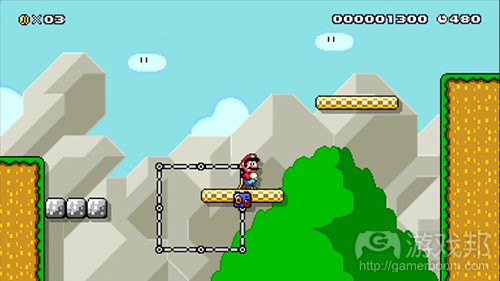
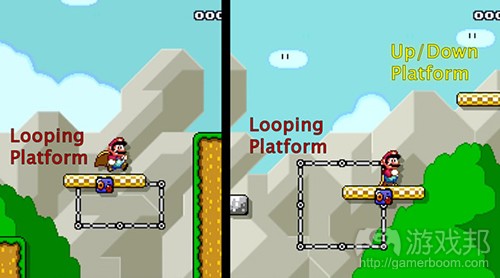
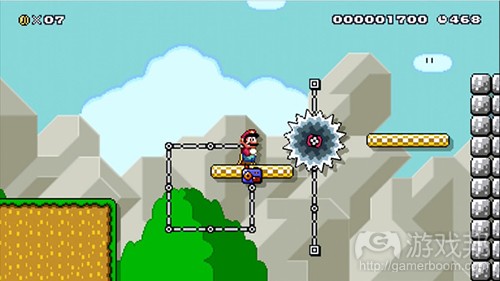
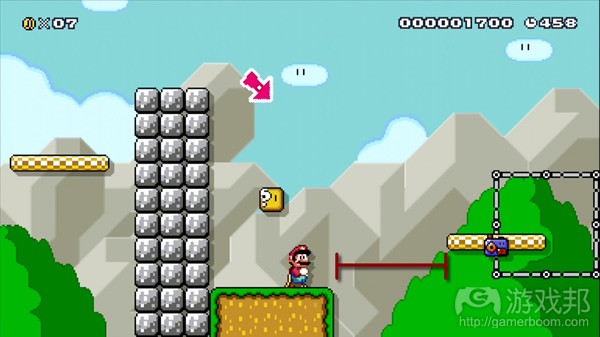
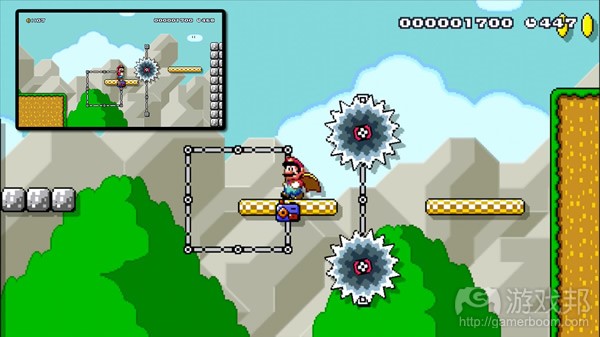


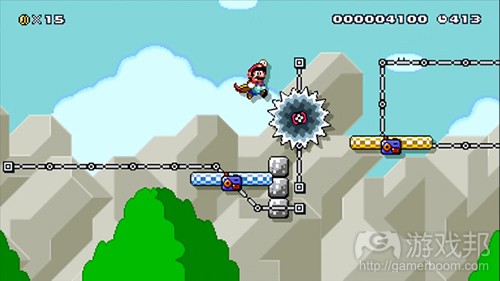
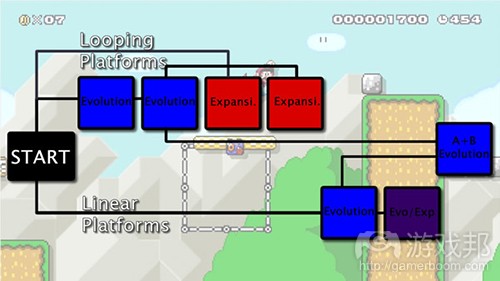
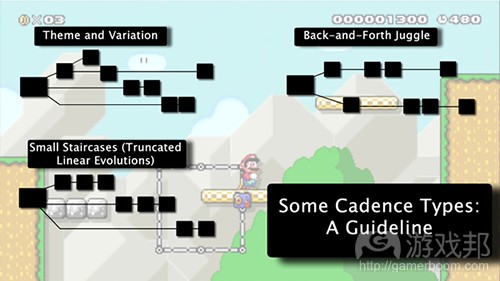














 闽公网安备35020302001549号
闽公网安备35020302001549号